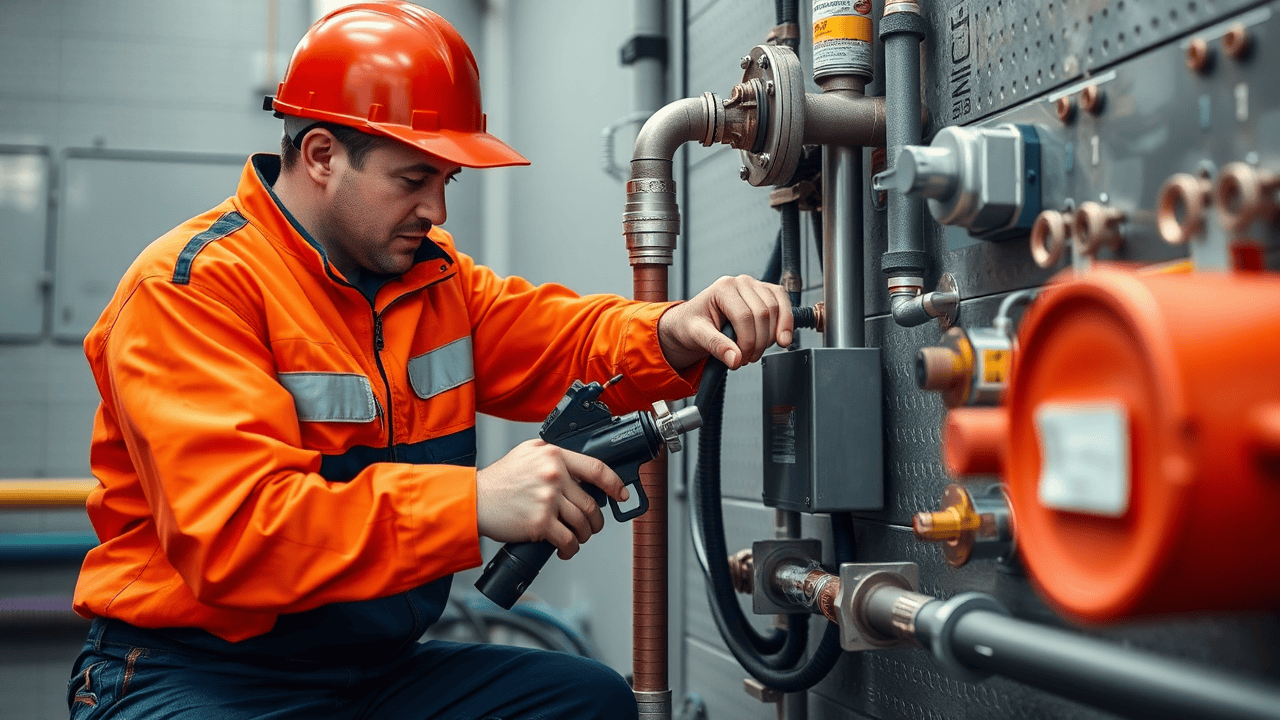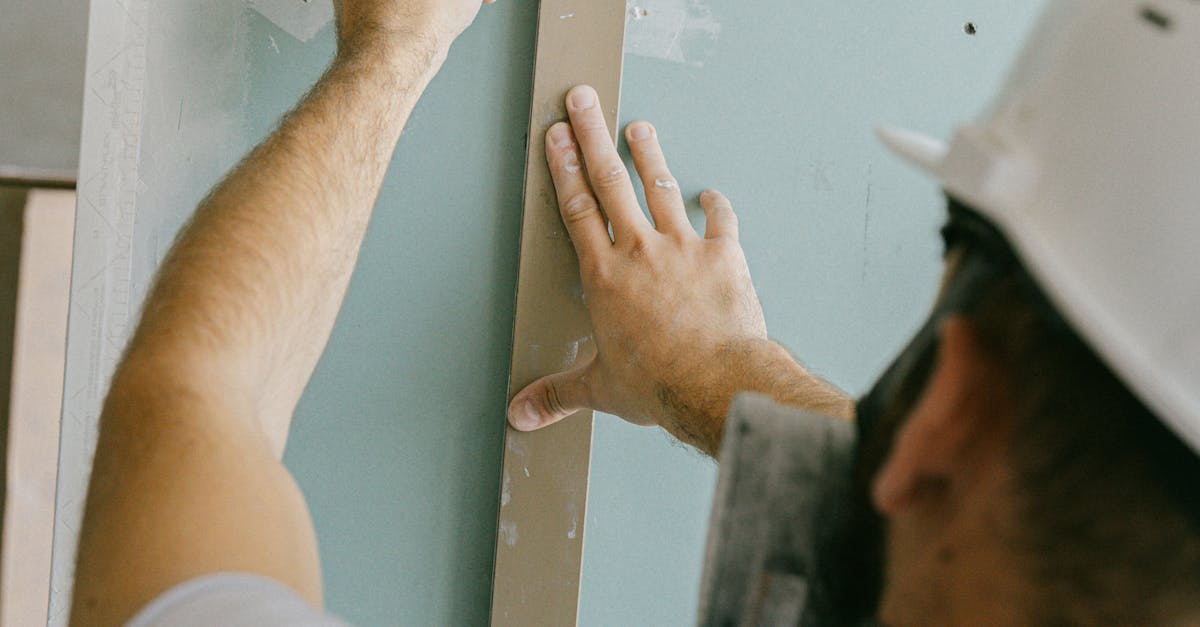
Tools and Materials Required for Installation
To successfully install a gas shut-off valve for a stove, you will need specific tools and materials that ensure a safe and efficient process. A pipe wrench and adjustable pliers are essential for loosening and tightening fittings on the existing gas line. In addition, a Teflon tape will provide a secure seal on threaded connections, helping to prevent leaks. It’s also advisable to have a level and a power drill on hand for proper alignment and installation of the valve.
Before starting the installation, gather the necessary materials, including the gas shut-off valve itself, which should be compatible with your specific stove model. Depending on your setup, you may also require additional pipes or fittings. If you're not experienced or comfortable with gas line work, consider searching for “gas line installation and repair near me” to find professional assistance. This ensures that the installation is not only completed correctly but also adheres to local safety regulations.
Essential Equipment List
When preparing to install a gas shut off valve, having the right tools is essential for a smooth process. Basic hand tools such as wrenches, screwdrivers, and pipe cutters will be necessary for working with the gas lines. Additionally, a pipe thread sealant helps create a secure and leak-proof connection at the joints. A level can also assist in ensuring that the valve is installed correctly.
If you're unsure about the installation process or prefer to have professionals handle it, searching for "gas line installation and repair near me" can connect you with qualified technicians. They possess specialized tools and knowledge to ensure that the installation meets local codes and regulations. Having the proper equipment and resources can significantly impact the safety and efficiency of your project.
Steps to Install a Gas Shut Off Valve
To install a gas shut off valve for your stove, begin by gathering the necessary tools and ensuring you have the right valve for your specific setup. Turn off the gas supply at the main line to prevent any leaks during installation. Carefully disconnect the existing gas line from the stove. If you're not familiar with the process, it may be beneficial to consult professionals or search online for "Gas line installation and repair near me" to find qualified assistance.
After you have disconnected the gas line, attach the new shut off valve to the gas supply. Ensure it is securely fastened and positioned for easy access. Once installed, reconnect the stove's gas line to the shut off valve. After checking that all connections are tight and secure, turn the gas supply back on slowly. Perform a test for leaks using soapy water on the connections. If bubbles form, it indicates a leak that must be addressed before usage.
A StepbyStep Guide
Begin by turning off the gas supply at the main valve to ensure safety during the installation. Identify the location where the shut-off valve will be installed, typically close to the stove. Use a pipe wrench to remove any existing connections and clean the threaded ends of the gas line. Make sure to wrap the threads with Teflon tape to ensure a proper seal before connecting the new shut-off valve.
Next, securely attach the shut-off valve to the gas line, tightening it carefully to avoid over-torquing. Once it is in place, turn the gas supply back on gradually and check for any leaks using a soap and water solution. If you are unsure about the process or encounter any issues, look for "Gas line installation and repair near me" to find professional assistance in your area.
Common Mistakes to Avoid
Overestimating your DIY skills can lead to serious mistakes during the installation of a gas shut off valve. Many homeowners assume that they can handle the task without professional help. This can result in improper sealing, which might cause gas leaks. Whenever there's any uncertainty regarding the process, it's wise to consult a professional. Searching for “Gas line installation and repair near me” can connect you with qualified experts who ensure the job is done safely and correctly.
Another common pitfall is neglecting the local building codes and safety regulations. Skipping this step can lead to complications down the line, especially when it comes to inspections or when selling your home. Each jurisdiction has specific requirements for gas line installations. Failing to adhere to these can result in fines or required renovations. Familiarizing yourself with these regulations, or working with a knowledgeable professional, can help avoid these costly errors.
Tips for a Successful Installation
When undertaking the installation of a gas shut off valve, thorough preparation is essential. Ensure that you have all required tools and materials on hand before beginning the process. Familiarize yourself with the specific requirements of your stove and gas line setup. If you're unsure about any aspect of the installation, consider consulting a professional. Searching online for "gas line installation and repair near me" can help you find local experts who can provide assistance or guidance.
Double-check connections and fittings once the valve is installed. A secure fit is crucial to prevent leaks. After installation, conduct a leak test using soapy water on the connections; bubbles will form if there are any leaks present. If you notice any issues, it is best to call a professional for repairs. Keeping safety as a priority will ensure that your installation is successful and reliable.
FAQS
What is the average cost of installing a gas shut off valve for a stove?
The average cost of installing a gas shut off valve for a stove typically ranges from $150 to $300, depending on labor and materials.
Are there additional costs associated with the installation?
Yes, additional costs may include permits, inspections, or any necessary modifications to existing gas lines.
Can I install a gas shut off valve myself, or should I hire a professional?
While it is possible to install a gas shut off valve yourself if you have the required skills and tools, it is recommended to hire a professional for safety and compliance with local codes.
How long does it take to install a gas shut off valve?
The installation process usually takes about 1 to 3 hours, depending on the complexity of the job and any modifications needed.
What are the benefits of having a gas shut off valve installed?
A gas shut off valve provides safety by allowing you to quickly cut off the gas supply in case of an emergency, making it a crucial component for any gas stove setup.


